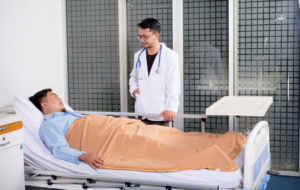Four Proven Quality Improvement Ideas for Different Types of Hospitals

If you were to ask a patient or healthcare professional, “What do you consider quality improvement to be?” – you are likely to come back with a long list of different answers. Some may say it relates to patient experience, while others may consider efficacy in delivery to equate to quality improvement. To this one question, there are many right answers.
Often, due to the value-based model that hospitals operate in, people often mention patient care in the same breath as customer service. At first, this may sound strange, yet when you consider the ‘value’ aspect of healthcare service delivery; it is very much like a retail business. Both industries attempt to outperform their competitors in offering the best product or service that will benefit their patients’ or customers’ lives.
What is a customer service that is valued by patients?
- Patients are seeking a hospital that exceeds customer experience and that offers the most up to date services and technology.
- They are also looking at a hospital’s metrics that reflect clinical excellence, a high attention to safety, and patient satisfaction.
In today’s healthcare industry, hospitals of all types face a challenge to implement changes that both meet their budget and attract patients.
The following are four proven quality ideas for hospitals of different types to implement.
1) How rural health hospitals are using Telehealth for maximum benefit
Telehealth products are on the rise for rural hospitals. Hospitals up and down the country are using telehealth devices for maximum benefit. One noteworthy example is Grand River Hospital. Grand River is a critical access facility that sees an average of seven patients a day. The hospital has used a telehealth technology called PipelineRX to provide an around the clock pharmacy service.
What is PipelineRX?
PipelineRX is an innovative system allowing 24/7 access to experienced clinical pharmacists to validate and process patient medication orders. PipelineRX has saved Grand River Critical Access Hospital and Medical Center $300,000 in pharmacy staffing costs.
Nancy McClew PharmD, director of pharmacy at Grand River and Medical Center said investing in telemedicine technology has not only saved the hospital money, but has also meant that pharmacy services are more accessible.
2) How one Children’s hospital reduced asthma visits through easy to implement quality improvement steps
Nationwide Children’s Hospital in Columbus, Ohio decided to take steps to reduce the number of asthma visits. Nationwide’s main goals behind this program were to enhance patients’ health and reduce expenditure.
This initiative included changing how they assess asthma, improving patient and parent education, and extending appointments for high-risk patients.
The program had outstanding results. Among the most significant changes was in the patient’s culture. Rather than parents instantly reacting to their child’s illness, they took a preventative approach.
 3) How Penn Medicine’s two year course is implementing creative quality improvement ideas of students
3) How Penn Medicine’s two year course is implementing creative quality improvement ideas of students
Penn Medicine, in Philadelphia, designed a two-year healthcare leadership course focused on quality improvement. For the final assignment, medical residents work within a healthcare microsystem to evaluate quality improvement needs.
The 40+ participants’ projects have had a positive impact on the health system since the course began in 2012. Medical residents’ innovations include a patient safety project that reduced 30-day readmissions; a value improvement project cutting unneeded daily labs by 10%; and a project that improved transitions between triage and a Labor and Delivery department.
4) Recent pre- surgery program that shows successful surgery outcomes
One of the challenges for surgeons is to improve their patient’s lifestyle behaviors that decrease the chances for successful surgical operations. Among the recent initiatives that showed positive results is the American College of Surgeons (ACS) Strong for Surgery (S4S) program.
The aim of the (S4S) program is to educate patients about steps they can take to improve their lifestyle to attain better surgical outcomes.
Clinicians from CHRISTUS St. Michael Health System, Texarkana, Texas, used the Strong for Surgery (S4S) program to help patients quit smoking and achieve an improved control of blood sugar levels before their operations.
Before CHRISTUS St. Michael Health used the program, 87.7% of their diabetic patients showed glucose levels less than 200 mg/ dl on the day of their operation. After they used the Strong for Surgery program for six months, the percentage of diabetic patients with glycemic control increased to 97.31%. This improvement is essential for these patients because control of blood sugar reduces the risk of variations in blood sugar during surgery. This also minimizes the risk of surgical site infections.
The Strong for Surgery Program cut down the number of smokers among pre-surgical patients. Results showed 10.5 percent of tobacco users quit smoking before their operations. Smoking has a high correlation with the occurrence of postoperative complications including infections and cardiovascular events. So eliminating these patients’ harmful lifestyle behaviors was essential for successful post-surgical outcomes.
The Take-Away:
Today, hospitals are looking for new ways to improve the quality and patient-centeredness of their services. Grand River Critical Access Hospital and Medical Center has shown the way forward in the use of telehealth innovations. Grand River’s use of PipelineRX has saved money for the hospital while providing increased access to pharmacy services. For the more academic hospital or health system, the Penn Medical System has implemented ideas of its residents to have a positive impact on their wide variety of services from reducing readmissions to improving transitions from tertiary to a Labor and Delivery department. Finally, quality improvement has shown to improve post-surgical outcomes through the Strong for Surgery (S4S) program.
By: Jonathan Gordon
